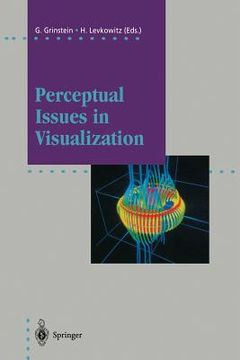Share
perceptual issues in visualization (in English)
Georges Grinstein
(Illustrated by)
·
Haim Levkowitz
(Illustrated by)
·
Springer
· Paperback
perceptual issues in visualization (in English) - Grinstein, Georges ; Levkowitz, Haim
$ 104.20
$ 109.99
You save: $ 5.79
Choose the list to add your product or create one New List
✓ Product added successfully to the Wishlist.
Go to My WishlistsIt will be shipped from our warehouse between
Friday, June 28 and
Monday, July 01.
You will receive it anywhere in United States between 1 and 3 business days after shipment.
Synopsis "perceptual issues in visualization (in English)"
With the increase in the amount and dimensionality of scientific data collected, new approaches to the design of displays of such data have become essential. The designers of visual and auditory displays of scientific data seek to harness perceptual processes for data exploration. The general aim is to provide ways for raw data, and the statistical and mathematical structures they comprise, to "speak for themselves" and, thereby, enable scientists to conduct exploratory, in addition to confirmatory analyses of their data. The present primary approach via visualization depends mainly on coding data as positions of visually distinguishable elements in a two- or three- dimen- sional euclidean space, e.g., as discrete points comprising clusters in scatter-plot displays and as patches comprising the hills and valleys of statistical surfaces. These displays are immensely effective because the data are in a form that evokes natural perceptual processing of the data into impressions of the presence and spatial disposition of apparent materials, objects, and structures in the viewers apparent physical environment. The problem with this mode of display, however, is that its perceptual potency is largeiy exhausted at dimension three, while we increasingly face the need to explore data of much greater dimensionality. The challenge posed for visualization researchers is to develop new modes of display that can push the dimensionality of data displays higher while retaining the kind of perceptual potency needed for data exploration.
- 0% (0)
- 0% (0)
- 0% (0)
- 0% (0)
- 0% (0)
All books in our catalog are Original.
The book is written in English.
The binding of this edition is Paperback.
✓ Producto agregado correctamente al carro, Ir a Pagar.

